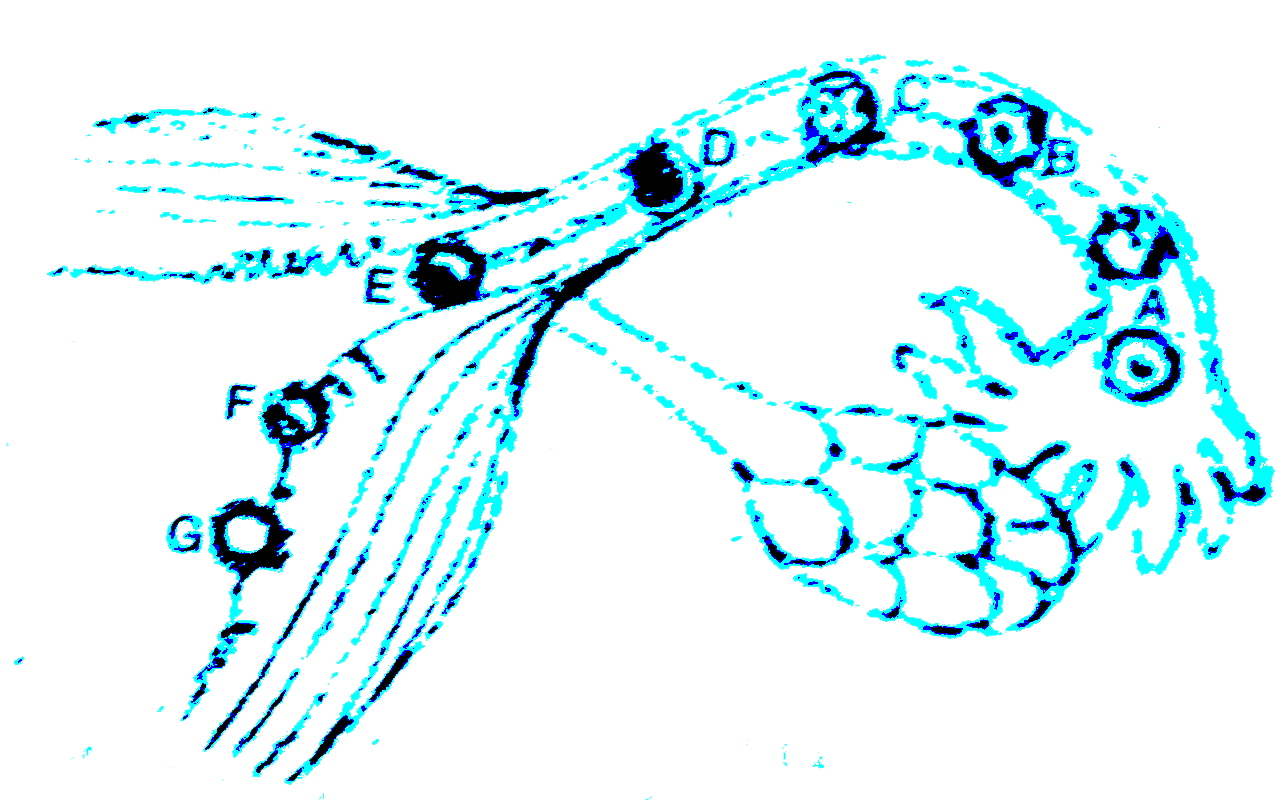IIIustrate diagrammatically the
Glycosidic bond
Step-by-Step Solution to Illustrate the Glycosidic Bond
Step 1: Understand the Concept of Glycosidic Bond
- A glycosidic bond is a type of covalent bond that links two monosaccharides (sugar molecules) together. This bond is formed between the carbon atom of one sugar and the hydroxyl group of another sugar, with the release of a water molecule (a process known as dehydration synthesis).
Hint: Remember that glycosidic bonds are formed through a dehydration reaction, where water is removed.
---
Step 2: Identify the Monosaccharides Involved
- For example, consider the disaccharide maltose, which consists of two glucose molecules. In maltose, the glycosidic bond is formed between the first carbon (C1) of the first glucose and the fourth carbon (C4) of the second glucose.
Hint: Identify the specific carbon atoms involved in the bond formation for clarity.
---
Step 3: Draw the Structure of the Monosaccharides
- Draw the two glucose molecules. Indicate the hydroxyl (-OH) and hydrogen (-H) groups on the respective carbon atoms (C1 of the first glucose and C4 of the second glucose).
Hint: Label the carbon atoms clearly to avoid confusion.
---
Step 4: Illustrate the Dehydration Reaction
- Show the removal of a water molecule (H2O) from the hydroxyl group of C1 of the first glucose and the hydrogen from C4 of the second glucose. This step is crucial as it signifies the formation of the glycosidic bond.
Hint: Use arrows to indicate the removal of water and the formation of the bond.
---
Step 5: Draw the Glycosidic Bond
- After the removal of water, draw the oxygen atom that forms the glycosidic bond between C1 of the first glucose and C4 of the second glucose. This bond is now represented as -O-.
Hint: Make sure to clearly indicate the glycosidic bond in your diagram.
---
Step 6: Label the Type of Glycosidic Bond
- For maltose, label the bond as "α(1→4) glycosidic bond" to indicate that it is an alpha bond formed between the first and fourth carbon atoms of the glucose units.
Hint: Remember to specify whether the bond is alpha or beta based on the orientation of the hydroxyl groups.
---
Final Diagram
- Your final diagram should clearly illustrate two glucose molecules, the removal of water, the formation of the glycosidic bond, and the type of linkage.
- A glycosidic bond is a type of covalent bond that links two monosaccharides (sugar molecules) together. This bond is formed between the carbon atom of one sugar and the hydroxyl group of another sugar, with the release of a water molecule (a process known as dehydration synthesis).
- For example, consider the disaccharide maltose, which consists of two glucose molecules. In maltose, the glycosidic bond is formed between the first carbon (C1) of the first glucose and the fourth carbon (C4) of the second glucose.
- Draw the two glucose molecules. Indicate the hydroxyl (-OH) and hydrogen (-H) groups on the respective carbon atoms (C1 of the first glucose and C4 of the second glucose).
- Show the removal of a water molecule (H2O) from the hydroxyl group of C1 of the first glucose and the hydrogen from C4 of the second glucose. This step is crucial as it signifies the formation of the glycosidic bond.
- After the removal of water, draw the oxygen atom that forms the glycosidic bond between C1 of the first glucose and C4 of the second glucose. This bond is now represented as -O-.
- For maltose, label the bond as "α(1→4) glycosidic bond" to indicate that it is an alpha bond formed between the first and fourth carbon atoms of the glucose units.
- Your final diagram should clearly illustrate two glucose molecules, the removal of water, the formation of the glycosidic bond, and the type of linkage.
Topper's Solved these Questions
- SAMPLE QUESTION PAPER 5 BOOK - ICSECHAPTER - SAMPLE QUESTION PAPER 5 EXERCISE - Part - II Section - B
15 Videos
- SAMPLE QUESTION PAPER 4 BOOK - ICSECHAPTER - SAMPLE QUESTION PAPER 4 EXERCISE - Part - II Section - C
9 Videos
- SEED DORMANCYBOOK - ICSECHAPTER - SEED DORMANCYEXERCISE - REVIEW QUESTIONS (VI Long Answer Type Questions)
10 Videos
Similar Questions
Knowledge Check
Glycosidic linkage is :
Aamide linkageBester linkageCether linkageDacetyl linkage.
IIIustrate diagrammatically the
Peptide bond
View Solutiona) Discuss the significance/applications of dipole moment.
b) Represent diagrammatically the bond moments and the resultant dipole moment in CO2,NF3 and CHCl3
View Solutiona) Discuss the significance/applications of dipole moment.
b) Represent diagrammatically the bond moments and the resultant dipole moment in CO2,NF3 and CHCl3
View SolutionRepresent diagrammatically the E.coli cloning vector pBR322.
View SolutionShow diagrammatically the stages of embryonic development from zygote upto implantation in humans .

View Solution" Glycosidic bond " is seen in
View SolutionWhat is meant by a sedimentary cycle? Depict diagrammatically the phosphorus cycle.
View Solution
